Text
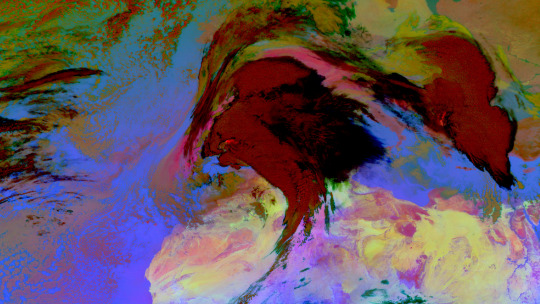
Open Call: GPC Lab
“Timecodes. Temporality and Consequences”
Dramaturgical support for innovative-experimental film, video and moving image work
Apply until TH, 06/06/2024
The Golden Pixel Cooperative invites artists to apply for the GPC Lab!
The Lab offers support and dramaturgical guidance for short or medium-length innovative, experimental film, video or moving image works. The programme will take place between late 2024 and late 2025. Three artists will be invited to participate with their submitted projects on this year's topic "Timecodes. Temporality and Consequences".
Programme
How can time concepts that take different lived realities into account be artistically conceived and realized? What do temporalities mean in relation to the social and political structures that organize them and through which they are shaped?
We invite artists to use specific approaches to explore, reflect on and construct the experience and representation of time.
Terms such as:
Time Accessibility, Actuality,
Memory. Cut
Sick Time, Sleepy Time. Ancestral Time,
Productivity,
Sustainability! Process?
Crip Time, Queer Time, Quality Time, Future.
Chrononormativity, measurement. History,
Attention economies,
Beat,
Cycle, Biography. Temporal and racial justice
Pause?
offer initial impulses for the topic of this year's GPC Lab.
The GPC Lab offers a framework for the production of film, video and moving image works in different phases of production. The focus is on individual dramaturgical advice and is defined according to the needs of the project. The dramaturgical advice can be focussed on various concerns (e.g. script writing, editing, documentary or virtual filming,...) and the consultation dates can be freely chosen within the programme period. The choice of dramaturg (GPC external experts) is made in consultation between the organizers and the Lab participants.
In addition, participants are offered the opportunity to benefit from the exchange and synergies of the Lab group and the connection with the GPC (invitations to workshops, network meetings and jour fixes). The Lab aims to create a productive, artistic-social environment for the realization of the film projects.
In a final presentation, the projects will be offered a platform for visibility and discourse (such as a workshop format or the presentation of the finished artistic work).
A GPC-external jury will select three projects from the submissions to participate in the Lab. The open call is aimed at artists who would benefit from the programme and would appreciate the Lab accompanying their projects, free of charge.
Application
Please send the application as a PDF in English! The project itself can be in German or English.
Applications should include:
Artistic CV with work samples
Description of the project (content, project status, plan for implementation, etc.; max. 3 pages)
Reference to the topic "Timecodes. Temporality and Consequences" (approx. 1/4 page)
What do you expect from the dramaturg? What would you like to work on together? (approx. 1/4 page)
Names of dramaturgs who you would like to work with (GPC-external, international or local experts)
Please send applications to: [email protected]
Application deadline: June 6th 2024 (23:59 CET)
Please read the conditions carefully. If participating in the Lab, applicants agree to the following terms:
Lab Agreement
Each applicant will receive an acknowledgement of receipt by email. Applications received after the deadline or incomplete applications will not be considered. Only one application per person is possible. The jury's decision will be announced in mid June 2024.
Procedure
Announcement of the jury's decision on the three selected projects
Networking meeting and workshop of the Lab participants in Vienna in autumn 2024 (1 day. Travel costs are to be borne by the participant).
Collective search for a dramaturgical accompaniment for the project
Three individual sessions of dramaturgical advice
Connection to the GPC network
Final presentation in Vienna in autumn 2025 (Travel expenses for the presentation can be paid).
Contact
Contact people for the GPC Lab: Marlies Pöschl and Iris Blauensteiner at [email protected]
Web: https://www.goldenpixelcoop.com
Image Credit
Katja Verheul: "Red Dust", 2024, 4K video, 17 min, video still
Contains EUMETSAT DUST RGB/MSG footage 2022
(c) Katja Verheul
Katja Verheul participated in the GPC Lab 2023/2024
0 notes
Text

Complicit Images
Screenings and conversations on the matter of images
Medienwerkstatt Wien / Neubaugasse 40a, 1070 Vienna
3.5.2024, 7-9 pm
4.5.2024, 5-9 pm
curated by: Maia Gusberti (Lucerne University of Applied Sciences and Arts), Olena Newkryta (The Golden Pixel Cooperative)
with films by: Enar de Dios Rodríguez, Musquiqui Chihying, Daphné Nan Le Sergent, Suneil Sanzgiri, Sanaz Sohrabi
with lectures by: Maia Gusberti, Caitlin Berrigan
What is the role of images in exploitation and dispossession processes? How do they frame the earth as a deposit for extractable resources? And how can images resist their own complicity? The programme Complicit Images presents films and performative lectures that question the role of visual media in the context of colonial surveying and exploration as well as in the extraction of raw materials and cultural knowledge. The selected works address the complicity of images in the conquest of territories, the representation of looted goods and the construction of visual narratives. On the one hand, they examine how the appropriation and exploitation of material and immaterial resources is staged, documented and legitimised by visual means. On the other hand, image technologies mostly rely on the availability of precisely these resources – an interrelation that is discussed in the curated programme from a media-situated perspective. The selected films consider the source and composition of their own materiality, technology and history. They reflect on the social and political function of images by means of images themselves.
The invited artists develop critical image practices by accounting for and reactivating visual archive material and employing new imaging technologies. They point to the (in)visibilities that images (re-)produce and explore alternative historiographies through material- and mediaspecific strategies. By examining and excavating the political and historical dimensions of images layer by layer, they create new frameworks and visual spaces for engagement and interaction. The films of the programme are committed to an experimental, rebellious, genuine and at the same time poetic reflection: The instrumentalization of visual media is redefined as a multi-layered, ambivalent complicity of images. Thus, images become tools for self-reflection, contextualisation and consequently reimagination. Complicit Images raises urgent questions about the visual construction of our (world)view and our visual literacy.
Programme:
Friday, 3.5.2024, 19:00
Film Screening
Scenes of Extraction (43 min., 2023), Sanaz Sohrabi
Liquid Ground (31:46 min, 2021), Enar de Dios Rodríguez
Followed by a Q&A with the filmmaker and member of The Golden Pixel Cooperative Enar de Dios Rodríguez.
Saturday, 4.5. 2024, 17:00
Lectures
Performative lecture by Maia Gusberti (Lucerne University of Applied Sciences and Arts / LUCA School of Arts, Gent), , 20 min. + Q&A
Lecture by Caitlin Berrigan (Academy of Fine Arts Vienna), 30 min. + Q&A
Saturday, 4.5. 2024, 19:00
Film Screening
The Sculpture (28 min., 2020), Musquiqui Chihying
L'image extractive (20 min., 2021), Daphné Nan Le Sergent
Golden Jubilee (19 min., 2021), Suneil Sanzgiri

Films:
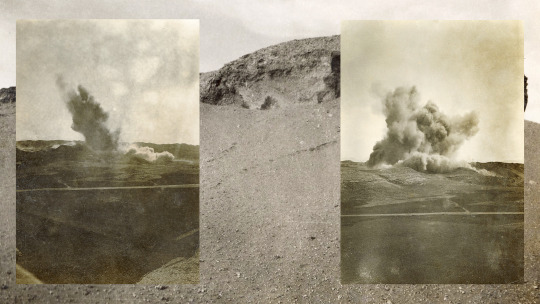
Sanaz Sohrabi
Scenes of Extraction
43 min., 2023, Canada / Iran
Scenes of Extraction traces technical and social entanglements between the construction of infrastructures and the political economy of images in the context of fossil fuel extraction in the Iranian oil belt in the first half of the 20th century. Collaging footage from the British Petroleum Archives, aerial footage and amateur material, Sanaz Sohrabi reflects on "reflection seismography" method of oil exploration. With a multi-layered, speculative approach and through the use of CGI maps and spatial renderings fed into an AI software, she uncovers discrepancies in colonial narratives. Scenes of Extraction constructs a historiography that questions the role of images in colonial extractive politics by examining their relationship to the history of photography and to archival strategies.

Enar de Dios Rodríguez
Liquid Ground
32 min., 2021, AT/ES
The seabed is one of the last unmapped spaces on our planet, and also one of the last unexploited natural spaces. From illustrations of underwater creatures to computer-generated cartographies of the seabed, Liquid Ground dives deep beyond the surface of representation into the abyss of colonization and exploitation of this underwater world. Structured around a child's questioning from a nursery rhyme, the film gradually reveals the complexity of the capitalist self-destructive system and offers a feeling of being trapped in a vicious circle of its consequences. Enar de Dios Rodríguez picks up on images that are deeply inscribed in our worldview and brings to light the visual technologies behind the plundering that simultaneously rely on the resources extracted from the depths of the sea.

Musquiqui Chihying
The Sculpture
28 min., 2020
The Sculpture takes two museum collections as its starting point: The recently established collection of African art in the National Museum of China in Beijing and the “imaginary museum” as conceived by the French art theorist André Malraux. Through a succession of black and white photographs and two alternating off-screen voices, the experimental documentary follows the movement of artefacts between the Asian, African and European continents.
What happens to an artwork once it is disconnected from its original cultural, geographical, and historical context? And who owns the art collection of the “Musée imaginaire”? Re-enacting a well-known portrait of Malraux, Musquiqui Chihying, reflects on how the Western gaze has modified the meaning of appropriated African artefacts.

Daphné Nan Le Sergent
L'image extractive
20 min., 2021
L'image extractive examines the material foundations of photographic and cinematic images. It is an intriguing journey into the economics, extraction and visual circulation of silver halide - the material that has enabled permanent capture of light and shadows in the first place.
Can an image look back at its own history? Is it able to witness the ruptured grounds from which it emerged? Daphné Nan Le Sergent considers silver photography through three levels of a production chain: the extraction industry, stock markets and data mining processes. Beginning with the first great silver deposits discovered throughout colonised Americas, the video essay spans stock market fluctuations, Kodak's efforts to digitise photography and data modelling as a way to predict the scarcity of resources.
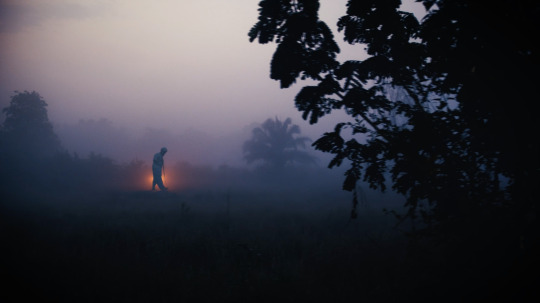
Suneil Sanzgiri
Golden Jubilee
19 min., 2021
“When we analyze the images of the past, are we asked to mine the archive?”
Trawling the potential of visual storytelling, the Golden Jubilee blends various visual textures and forms of narration; drone videography of Goa’s landscapes, 3D renderings of the filmmaker's family's ancestral home and 16mm footage of the liberation movement. It reimagines the history of a place that has been haunted by financial speculation, mineral extraction and colonialism. This film is the third in a series of works about memory, diaspora and decoloniality. In this piece, Suneil Sanzgiri centres his father’s memory of encountering the “demonic” spirit Devchar, whose task is to protect workers, farmers, and the once communal lands of Goa, but “protection from what?" the filmmaker asks.
Lectures
Caitlin Berrigan works as a visual artist and writer to explore poetics and queer science fiction as world-making practices through instruments and moving images. Her work enfolds the complexity of interrelations across humans and other beings within spatial ecologies, technologies, and systems of capitalism. She has received fellowships and residencies from the Humboldt Foundation, the Graham Foundation and the Akademie Schloss Solitude among others.. Her experimental writings are published by e-flux, MARCH, Duke University Press and Broken Dimanche Press. Currently a Senior Postdoctoral Fellow at the Academy of Fine Arts in Vienna, Berrigan has held full-time and visiting faculty positions at NYU Tisch, Caltech, Bard College Berlin, Harvard, and UMass Boston.
Maia Gusberti is a visual artist and researcher. She transforms lens-based images into multi-layered relational spaces in order to reflect on the relationship between image, gaze and society. Her practice includes curatorial projects such as "Complex Images" (Kino REX, Bern) and "Choreography of the Frame" (Kunsthalle Exnergasse, Vienna). She studied Art and Digital Media (University of Applied Arts, Vienna) and Critical Images (Royal Institute of Arts, Stockholm). Currently, she is a doctoral candidate at the LUCA School of Art and the Lucerne School of Design, Film and Art (HSLU), where she also works as a research assistant. As an artist in residence she worked in Cairo and Amman (Pro Helvetia), Ramallah (Al Mahatta), Paris Cité des Arts and Rome (BMUKK) and in Sofia (Interspace). Gusberti presents her projects at international exhibitions, conferences and festivals.
0 notes
Text

GOLDEN PIXEL TALKS: ABOUT A DRAMATURGY OF THE OPEN FORM
with Christine Lang and Nathalie Koger
Podcast to be heard at
www.soundcloud.com/golden-pixel-cooperative
Sounddesign by Vinzenz Schwab
Curated and conceived by Mona Schwitzer
In the second edition of the Golden Pixel Talks, Christine Lang and Nathalie Koger talk about the dramaturgy of the open form as a reference system. As a counterpart to a closed narrative logic, an open-form dramaturgy requires a clear attitude towards oneself and the world. It is a different kind of storytelling that is episodic and topic-orientated. To what extent can stereotypes of the closed form be avoided with process-orientated work and cooperative production methods? And how is it possible to find a narration based on locations and thereby create other links of thought and contexts of meaning?
Nathalie Koger, artist and art educator, recently made the short film Die Videokonferenz der Tiere and was advised by Christine Lang as part of the GPC Lab. Dramaturge and film scholar Christine Lang is a filmmaker herself and works in the context of film, television and theatre. She is particularly interested in film and series dramaturgy, most recently published David Lynchs „Mulholland Drive“ verstehen (transcript 2023) and is currently preparing a feature film.
GOLDEN PIXEL TALKS invite artists and theorists whose fields of research overlap to a dialogue. The artistic positions of The Golden Pixel Cooperative are expanded to include scientific and socio-political perspectives. This creates a discursive space for a “search movement on the border between knowledge and non-knowledge” (Rheinberger 2012), which unites research in science and art.
Image credit: Pablo Leiva
0 notes
Text

Associative Fields
Script & Dramaturgy Workshop
with Iris Blauensteiner
Wednesday, 06.12.2023, 2-6 pm
Medienwerkstatt Vienna
Neubaugasse 40A, 1070 Vienna
Based on the text "The Carrier Bag Theory of Fiction“ (Ursula K. Le Guin), we will enter associative fields and research narrative structures. Using objects brought along and in exchange within the group, we work on formal and dramaturgical possibilities for the participants' own artistic film, video, or moving image projects. We will experiment with ideas around the How of content and the Why of its connections.
Please bring your writing tools and your thoughts about the artistic project you want to work on! Information about the preparation will be sent to you before the workshop.
We kindly ask you to register by 30.11.2023 to [email protected]
Participation is free of charge, but the number of available places is limited, so we will consider registrations in the order they are received. The workshop can take place in German and English.
The event is part of the workshop series "Sharing Skills" by The Golden Pixel Cooperative.
Iris Blauensteiner works as a filmmaker and writer. She is a member of the Golden Pixel Cooperative.
www.irisblauensteiner.com
0 notes
Text

GPC Streams (#4) Vienna Plays Itself
Online Screening
Conceived by Elena Cooke und Katrin Euller
Artists: Miae Son, Charlotte Gash, Laura Nitsch
22/11/2023 - 28/11/2023
21:00 - 22:11 (in your timezone)
Each evening on GPC Online Screen
http://streaming.goldenpixelcoop.com
Vienna Plays Itself presents works by three feminist filmmakers and artists, each with a linking thread: Vienna. These artists have all studied, lived and worked in Vienna and their works reflect on their experiences. Through the artist's different critical approaches, also towards image production, we witness encounters and struggles with identities, bodies, and art politics.
Miae Son’s work, ‘Bigger’, takes a poetical and critical approach towards the dominance of western philosophy. It addresses the difficulties of a migrant woman’s body from her everyday life in a classical European living space.
Blurring the boundaries between documentary and fiction, in ‘Tunnel of Inclusion’, Charlotte Gash uses Vienna’s art scene to act, and then presents it back like a mirror to the art world.
In ‘Violett’, Laura Nitsch discusses the historical period of Red Vienna in terms of in/visibilities, class differences and the construction of sexuality and gender.
Programme:
Miae Son: Bigger, 2022, Austria, 8:57 min.
Charlotte Gash: Tunnel of Inclusion;
Behind the Scenes Documentary, 2023, Austria, 28:58 min.
Laura Nitsch: VIOLETT, 2023, Austria, 31:40 min
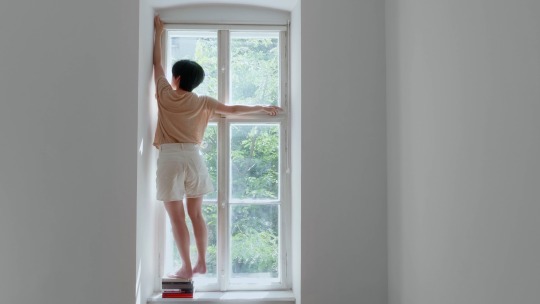
Miae Son: Bigger, 2022, Austria, 8:57 min.
The artist, as the protagonist, is standing at a window in an old Viennese apartment. She struggles to fix a broken blind mounted high above. She climbs the narrow windowsill, stretches her body but falls short. Placing books by male philosophers who have shaped European discourse as support, she finally reaches the blind.The texts translated into Korean indicate, on the one hand, the need for a sense of linguistic security and on the other, they reveal an inner compulsion to appropriate this European canon, which is shaped by power relations. Bigger addresses the difficulties of a migrant woman’s body from her everyday life in a classical European living space and the domination of western culture.
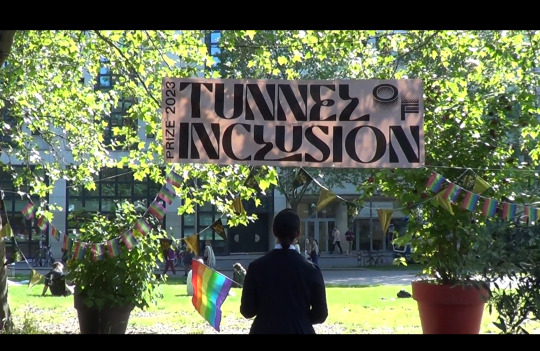
Charlotte Gash: Tunnel of Inclusion; Behind the Scenes Documentary, 2023, Austria, 28:58 min.
Tunnel of Inclusion; Behind The Scenes Documentary is a behind the scenes mockumentary style persiflage of installing a prize exhibition showcasing the young Austrian art scene, on display at Kunsthalle Karlsplatz Wien. Tunnel of Inclusion; Behind The Scenes Documentary follows CURATOR hiring a film crew to make a documentary about her first institutional exhibition. Problems arise on the way towards the day of the opening, following the ARTISTS, DIRECTOR OF INSTITUTION, ASSISTANTS and the CURATOR work towards the fine art academies award exhibition, as characters CHARLOTTE, ARTIST 1, ARTIST 2 and ART BITCH prepare for the award ceremony where the prize will be announced.
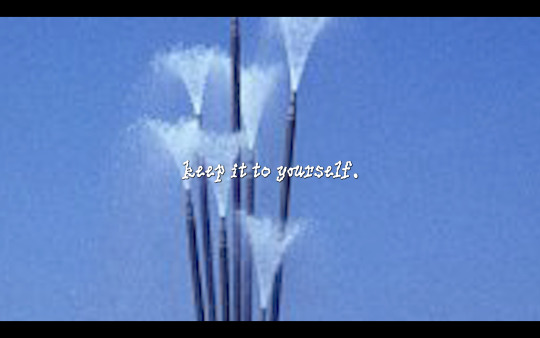
Laura Nitsch: VIOLETT, 2023, Austria, 31:40 min.
VIOLETT is an experimental documentary, concerned with the in/visibility of class differences in the historical construction of sexuality and desire. Putting emphasis on the geopolitical context of Red Vienna (1918-1934), the film approaches the tension between in/visibility, memory and history writing.
0 notes
Text

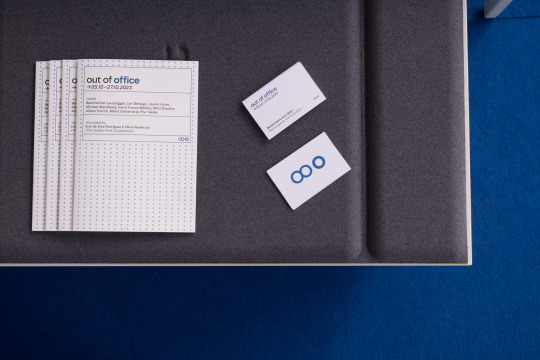
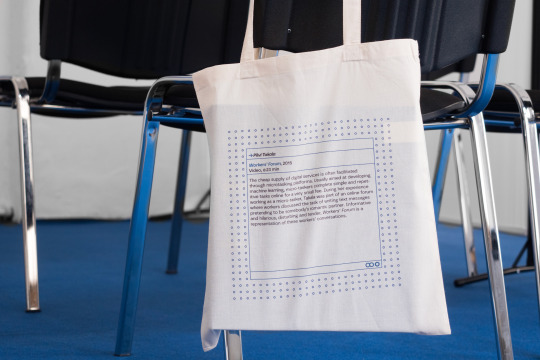



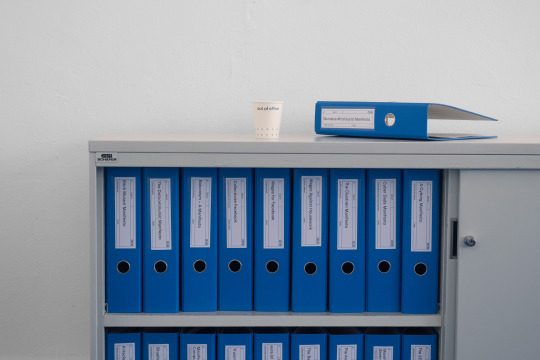


out of office
Group exhibition 06/10-27/10/2023
Tue-Fri, 17:00-20:00 and on request
Opening: 05/10/2023, 19:00
Medienwerkstatt Wien
Neubaugasse 40a, 1070 Vienna
with Beierheimer/Laussegger, Liat Berdugo, Lauren Huret, Michael Mandiberg, Eva & Franco Mattes, Mimi Ọnụọha, Allison Parrish, Mario Santamaría, Pilvi Takala
curated by Enar de Dios Rodríguez & Olena Newkryta (The Golden Pixel Cooperative)
Behind each screen, each piece of digital information, each data exchange, hides a complex assemblage of material and labour, which includes not only mined minerals and electrical networks, but also present and removed workforces. The obfuscated labour sometimes takes the shape of a hand that extracts, or an eye that watches endless sets of images, or an ear that attends the way the fans are roaring. The screen is thus a giant constellation of paid and unpaid labour, and any of its offered clicks is directly tied to geographically dispersed workers. These are workers who are mostly overloaded, underpaid, and highly dependent on their own screens. How can we witness the work that takes place behind the screens? Triggered by this urgent question, The Golden Pixel Cooperative (Olena Newkryta and Simona Obholzer) organised an online symposium in 2022 to which artists and thinkers were invited to respond. Titled Screen Matters - The screen as a place of work, the symposium examined various ways in which workers are being physically, emotionally, and cognitively exhausted by new forms of digital labour. The group exhibition out of office is an attempt at exposing this topic through the presentation of artistic works in a speculative setting—a co-working space replicated by the exhibition display aesthetics.
The show presents a wide variety of artistic approaches by contemporary practitioners that range from video and web-based pieces to the documentation of certain forms of labour performed by both humans and automated machines. The common thread shared by all the artworks is the positionality of the artists themselves, who appear as absent screen workers (creative or otherwise), and whose conscious representation of labour is the main protagonist of each piece. Despite this common denominator, the wide variety of screen work is reflected by the diverse types of workers featured in the exhibition: a micro-worker, a bot developer, programmers of computer-generated text, a creator of personalized digital-data portraits, a patent issuer of digital-related gestures, an organizer of crowdsourced digital images, and media artists. Rather than giving in to the invisibility of labour, in out of office the artists' absence from their place of work suggests a potential retreat from the whirlwind of clicks, scrolls and screens.
0 notes
Photo


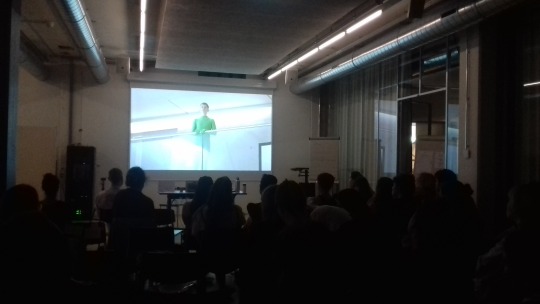

Visit to NOW<->FUTURE?
Book presentation, film screening & workshop
05.06.2023–06.06.2023
Bern University of the Arts
Fellerstrasse 11, 3027 Bern, Switzerland
Conceived by: Enar De Dios Rodríguez, Annemarie Hahn, Nathalie Koger
The series is a collaboration between Bern University of the Arts / Master Art Education Program / Annemarie Hahn and The Golden Pixel Cooperative.
NOW<->FUTURE? is the title of this year's networking meeting of art education students from all over Switzerland at the Bern University of the Arts.
05.06.2023 · Book Presentation
You’ll Never Work Alone: Collective Infrastructures in Moving Images
Start: 6 PM
Duration: approx. 60 minutes
Location: Bern University of the Arts, Fellerstrasse 11, Small Auditorium, 3027 Bern
And via Zoom at:
https://phbern.zoom.us/meeting/register/u5YpdeCopjwqGNafYQW5au4UEtjJishI6PUA
Presented by Enar de Dios Rodríguez & Nathalie Koger (from The Golden Pixel Cooperative/Vienna), and as a guest, Katja Lell (University of Cologne).
The publication explores the potentials and challenges of collective cinematic and artistic work and raises the question of shared infrastructure through international and local perspectives of theorists and practitioners.
Our guest, Katja Lell, will present her text: On Overturned Charis, Soft Pillows, and (Dis-)comfort with Accomplices - Thoughts on Queering Film Education.
Spatial intervention in dialgue with Katja´s Lell book contribution with objects by Nathalie Koger and Wolfgang Obermair from the installation Places that are only built as signs from a distance. Up close, they have no name., 2018.
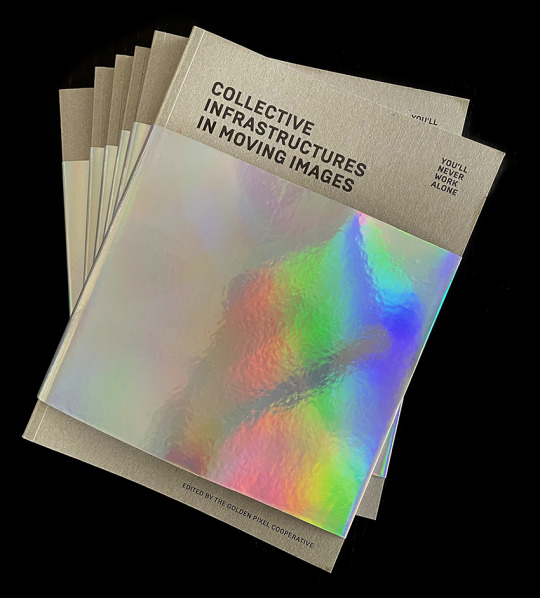
Publication: The Golden Pixel Cooperative: De Dios Rodríguez, E., Koger, N., & Schwitzer, M. (Eds.). 2022. You'll Never Work Alone: Collective Infrastructures in Moving Images. SCHLEBRÜGGE.EDITOR..
06.06.2023 · Film Screening
Frame Works. Educational Contexts and Moving-Image Works
Start: 9:15 AM
Duration: approx. 90 minutes
Location: Bern University of the Arts, Fellerstrasse 11, Auditorium, 3027 Bern
Artists: Adelita Husni-Bey, Nathalie Koger
The screening showcases two films: Postcards from the Desert Island, 2010-11 by Adelita Husni-Bey and The Video Conference of the Animals by Nathalie Koger. Created with children and young people in educational contexts, these films explore ethics of coexistence in symbolic and imaginary forms. It will be followed by a Q&A session with Nathalie Koger.
Additionally, the film Vestiges (an archipelago) by Enar De Dios Rodríguez will be on view at Bern University of the Arts, as part of the networking week NOW<->FUTURE.
FILMS
Adelita Husni-Bey: Postcards from the Desert Island, digital video, color, sound, 2010-11, 23 min.
The film Postcards from the Desert Island by Adelita Husni-Bey showcases her collaboration with a self-managed public elementary school in Paris. During a three-week workshop, the artist invited children to transform their classroom into a deserted island. The film documents how the group of children embraces a social life in the no man's land, and it portrays their engagement with some of the key principles and unresolved issues of self-management.
Nathalie Koger: The Video Conference of the Animals, 2023, Video 4K, color, sound, 2023, 30 min.
The Video Conference of the Animals by Nathalie Koger is a 30-minute documentary-fiction in which narratives from the children's book "The Conference of the Animals" by Erich Kästner are transposed and appropriated into the present era: the Anthropocene. The work was developed together with a group of children and teenagers from a school in Germany as well as some individual pupils from Austria.
Enar De Dios Rodríguez: Vestiges (an archipelago), HD video, color, sound, 2020, 40 min.
Vestiges (an archipelago) by Enar De Dios Rodríguez is an audiovisual essay that investigates humans’ insatiable demand for sand, the most extracted natural resource after water. A poetic narrative maze where colonialism, dredging machines or land reclamation projects emerge.
06.06.2023 · Workshop
Introduction into Research Tools of Internet Based Images, Moving-Image Works and Related Matter
Start: 11 AM
Duration: approx. 90 minutes
Location: Bern University of the Arts, Fellerstrasse 11, 3027 Bern
Facilitators: Enar De Dios Rodríguez, Annemarie Hahn, Nathalie Koger
The workshop serves as an introductory overview of online archives that could be useful for research, artistic and teaching purposes for the students. Following that, we will engage in a hands-on, playful, and imaginative exploration of the medium of sound, focusing on the themes of the networking week: How does the future I envision sound? How can the manifesto we write during the networking week sound?
Please bring (if available): audio recording device or mobile phone, laptop with audio software.
Image credits:
1st image: Adelita Husni-Bey: Postcards from the Desert Island, 2010-11, Video still © Husni-Bey
2nd image: publication: The Golden Pixel Cooperative: De Dios Rodriguez, E., Koger, N., & Schwitzer, M. (Eds.). 2022. You'll Never Work Alone: Collective Infrastructures in Moving Images. SCHLEBRÜGGE.EDITOR. Book cover and banderole © bildrecht Vienna, 2023 / Nathalie Koger
Funded by the Cultural Department of the City of Vienna, the Federal Ministry for Arts, Culture, Civil Service and Sport, The Golden Pixel Cooperative, and the Bern University of the Arts.
0 notes
Photo
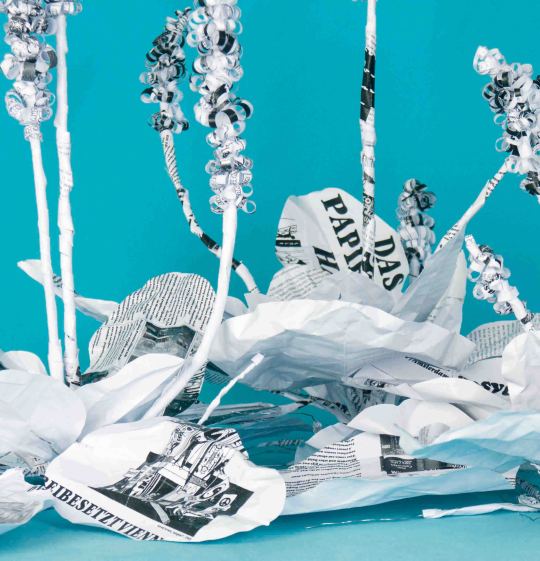
plants as a site of knowledge
Film screening (in person and online), billboards and workshop
Billboards presentation: 24.05.2023
/ 19:30 Uhr
Film screening: 24.05.2023
/ 20:00 Uhr
Botanical walk: 25.05.2023 / 17:30 Uhr
Online film screening: 25.05.-01.06.2023 / 20:00-21:35 Uhr
Flucc Wien, Praterstern 5, 1020 Vienna
Online film screening: https://streaming.goldenpixelcoop.com
Films by: Patricia Esquivias, Hanna Rullmann & Faiza Ahmad Khan, Shireen Seno, Tin Wilke & Miguel Goya
Billboards by: Pille-Riin Jaik
Botanical walk by: Birgit Lahner
Curated by: Enar de Dios Rodríguez and Marlies Pöschl, The Golden Pixel Cooperative
The film programme plants as a site of knowledge collects stories about the relationship between plants and memory, accounts that inform about the socio-political and economic entanglements present in ecosystems’ histories. What kind of memory do plants carry with them? To what extent are they part of cultural memory? Can time be turned back in ecosystems and if so, what are the (political) implications? The films that will be presented during this screening reflect on how plants have been separated from their environment in the service of colonial representation or economic interests in order to circulate or be grown in another place.
Besides the screening, which will happen at flucc and will be available online via the GPC Online Screen for a week, there will be also a “botanical walk” around the flucc area lead by Birgit Lahner, and artworks by GPC member Pille-Riin Jaik will be presented on the flucc billboards.
FILM PROGRAMME
Shireen Seno: To Pick a Flower, 2021, 17 min.
Patricia Esquivias: Cardón cardinal, 2020, 38:37 min.
Hanna Rullmann & Faiza Ahmad Khan: Habitat 2190, 2019, 16:34 min.
Tin Wilke & Miguel Goya: Las Flores, 2022, 19 min.
BILLBOARDS
Pille-Riin Jaik: Communal Weeds, 2023, intervention on billboards
Weeds like to thrive on disturbed lands. Their favourite locations being next to train stations and roadsides. They adapt with ease to rather cruel conditions and enrich the damaged soils during transitory phases. Where there is a need, there's weed. Deemed quite often unuseful and of disturbance by the pragmatists, weeds have developed various forms of counteractions and elaborate skills of perseverance. Like a many-headed monster, if it's plucked out, a new, more-headed version will appear.
WORKSHOP
Birgit Lahner: Botanical walk around the Flucc
Past, present and future from a plant perspective
The diversity of urban plants, especially the fragmented floodplain landscape in the 2nd district, but also the inconspicuous flora of the city's wastelands and pavement cracks, often perceived at best as a backdrop, gradually come to the fore on this walk. This new view of urban vegetation allows us to recognise the manifold interrelationships between humans and plants and to marvel at their adaptability.
Max. 15 participants, registration at [email protected]
Please wear appropriate clothing, the walk will also take place in the event of rain.
FILMS:
Shireen Seno, To Pick a Flower, 2021, Video
A potted plant is placed on a pedestal: It becomes a stand-in for an absent groom in a wedding photograph. While this plant seems to bear a certain agency, the plants in the images to follow have been broken apart in ever smaller pieces, in order to be transported by workers and then sold. Using photographs taken during the American colonial era in the Philippines, Shireen Seno traces the sticky relations between humans, nature and their entanglements with empire.
Patricia Esquivias, Cardón cardinal, 2020, Video
In 1992, a giant cactus from the desert of Baja California was moved to Spain in order to be showcased at the Mexican Pavilion gardens of the Sevilla Universal Expo. Esquivias’ film tells the history of this journey, the cactus’ life afterwards, currently surrounded by the pavements of a parking lot, and many entangled stories. The narrated collage constructed by Esquivias, which partly happens in front of her computer screen, as it’s characteristic from her video works, draws careful and unpredictable lines between past and present.
Hanna Rullmann & Faiza Ahmad Khan, Habitat 2190, 2019, Video
“Habitat 2190” takes as protagonist a site in Calais (France) which served as a migrant camp and is planned to become a nature reserve area. This essay film reflects upon the artificialities of borders, and the intersection of mobilities, while questioning how value is constructed, how nature is imagined and which species get to be protected. Rullmann & Ahmad Khan’s work juxtaposes conversations, official documents, and on-site recordings in order to reveal complex issues from contemporary Europe.
Tin Wilke & Miguel Goya, Las Flores, 2022, Video
Trios of magic bells are neatly lined up on the shelf of a supermarket. In “Las Flores”, the people whose labour is behind the immaculate appearance of these flowers become visible. Through the eyes and ears of their mobile phones, Vicky, Roca and Tincho, three Latinx immigrants document their work in a German flower factory during the first lockdown in 2020. A dazzling film told from the interstices, reflecting on labour, the fear of what comes next and the moments of freedom in between.
0 notes
Photo

Open Call: GPC Lab
Dramaturgical support for innovative-experimental film, video and moving image work
Application Deadline: 12 June 2023
The Golden Pixel Cooperative invites artists to apply for the GPC Lab! The Lab offers support and dramaturgical guidance for short or medium-length innovative, experimental film, video or moving image works. The programme will take place between late 2023 and late 2024. Three artists will be invited to participate with their submitted projects.
PROGRAMME
The GPC Lab offers a framework for the production of film, video and moving image works in different phases of production. The focus is on individual dramaturgical advice and is defined according to the needs of the project. The dramaturgical advice can be focussed on various concerns (e.g. script writing, editing, documentary filming,...) and the consultation dates can be freely chosen within the programme period. The choice of dramaturg is made in consultation between the organisers and the Lab participants. In addition, participants are offered the opportunity to benefit from the exchange and synergies of the Lab group and the connection with the GPC. The Lab aims to create a productive, artistic-social environment for the realisation of the film projects. In a final presentation, the projects will be offered a platform for visibility and discourse (such as a workshop format or the presentation of the finished artistic work).
An external jury will select three projects from the submissions to participate in the Lab. The open call is aimed at artists who would benefit from the programme and would appreciate the Lab accompanying their projects, free of charge.
The Golden Pixel Cooperative (GPC) is an association for moving images, arts and media, active within both exhibition and cinema contexts. It was founded from the need to act collectively in a predominantly individual cultural landscape. With a critical, feminist and antidiscriminatory approach, we work on the production, distribution, and presentation of artworks and discourses. We foster empowerment and solidarity by enabling exchange and support between artists, cultural workers, educators and thinkers. Collectively, we work on projects that have various formats such as screenings, exhibitions, symposia and publications.
APPLICATION
Please send the application as a PDF in English! The project itself can be in German or English.
Applications should include:
Artistic CV with work samples
Description of the project (content, project status, plan for implementation, etc.; max. 3 pages)
Motivation for participation in the GPC Lab (approx. 1/2 page)
If possible, suggestions for the dramaturg who you would like to work with.
Please send applications to: [email protected]
Application deadline: 12 June 2023 (23:59 CET)
If participating in the Lab, applicants agree to the following conditions: Letter of agreement GPC Lab
Each applicant will receive an acknowledgement of receipt by email. Applications received after the deadline or incomplete applications will not be considered. Only one application per person is possible. The jury's decision will be announced at the beginning of July 2023.
PROCEDURE
Announcement of the jury's decision on the three selected projects
Networking meeting of the Lab participants in Vienna in autumn 2023
Collective search for a dramaturgical accompaniment for the project
Three individual sessions of dramaturgical advice
Connection to the GPC network: e.g. invitation to GPC Network Evenings
Final presentation in autumn 2024
CONTACT
Marlies Pöschl and Iris Blauensteiner at [email protected]
Call: https://en.goldenpixelcoop.com/post/715660065101807616/open-call-gpc-lab-2023
0 notes
Photo
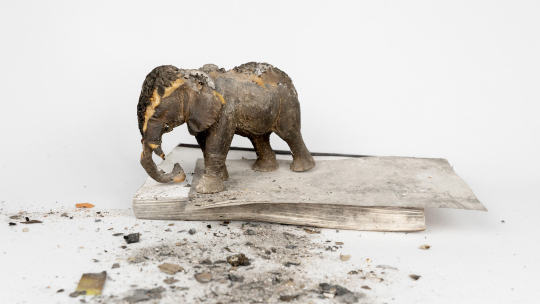
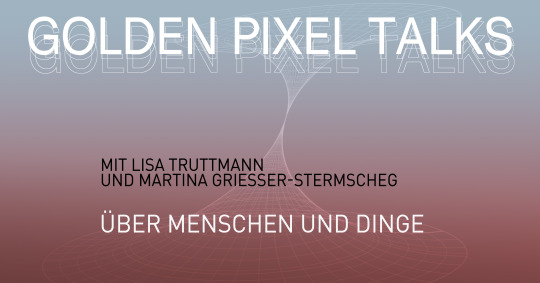

GOLDEN PIXEL TALKS: ABOUT PEOPLE AND THINGS
with Lisa Truttmann and Martina Griesser-Stermscheg
Podcast to be heard from 17 December 2022 at
www.soundcloud.com/golden-pixel-cooperative
Sounddesign by Vinzenz Schwab
Curated and conceived by Mona Schwitzer
Why are things so important to most people? To what extent do they function as a medium for identification, how do they provide orientation? And when does a thing actually become an object? In the first edition of the Golden Pixel Talks, Lisa Truttmann and Martina Griesser-Stermscheg talk about the relationship between people and things. Lisa Truttmann, filmmaker and artist, is currently working on her essayistic cinema film Dinge Wie Du und Ich. Martina Griesser-Stermscheg is a museologist, curator as well as a restorer and in her daily work deals with the interaction between things and people.
GOLDEN PIXEL TALKS invite artists and theorists whose fields of research overlap to a dialogue. The artistic positions of The Golden Pixel Cooperative are expanded to include scientific and socio-political perspectives. This creates a discursive space for a "search movement on the border between knowledge and non-knowledge" (Rheinberger 2012), which unites research in science and art.
Image credit:
Lisa Truttmann, Dinge Wie Du und Ich (film still), 2022
Pablo Leiva
0 notes
Photo
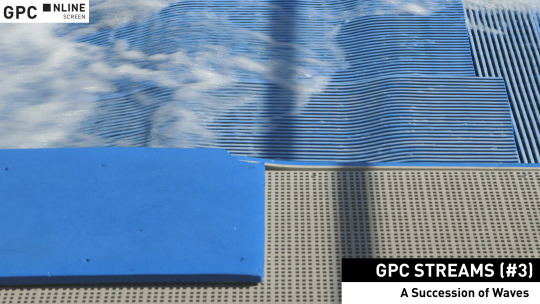
GPC STREAMS (#3)
A SUCCESSION OF WAVES
ONLINE FILM SCREENING
14.12.–21.12.2022, 9 PM until 9.30 PM (in your timezone)
Each evening at the GPC Online Screen
http://streaming.goldenpixelcoop.com
With works by Simona Obholzer, Clea Stracke & Verena Seibt, Yuyan Wang
Curated by Enar de Dios Rodríguez
In a 2014 lecture, Stefan Helmreich stated that waves are entities that “flicker between reality and representation.” Waves are arguably one of the most complicated objects that exist in the world: their scientific observation and measurement depends on a slippery amalgamation of recorded events, technological apparatuses, as well as mathematical computations and statistical calculations. This complexity, according to Helmreich, proves that waves are as much physical as cultural objects. It is in the wave where we can see how knowledge is always in-process, always only partial, and intrinsically influenced by prevailing politics and technologies.
A Succession of Waves embraces the impossibility of comprehending the inexhaustible swell by presenting three attempts to represent it through film. First, in Obholzer’s 2 days left, the wave has been constructed artificially: an anthropogenic leisure trick captured through a rather abstract succession of moving images. In the second attempt, Wang’s One Thousand and One Attempts to Be an Ocean, a hasty succession of scenes becomes overwhelming, a flood that reminds us of infinite scrolls and latent threats. The last example, The Ship is Sinking by Stracke & Seibt, goes back to a moment of quietness, where the The Raft of the Medusa, a magnificent symbol of human’s wrecked horizon, is reenacted by collapsing two planes and materialities into one.
PROGRAM (30 min)
9 - 9:08 PM 2 days left by Simona Obholzer
9:09 - 9:21 PM One Thousand and One Attempts to Be an Ocean by Yuyan Wang
9:22 - 9:30 PM The Ship Is Sinking by Clea Stracke & Verena Seibt
GPC STREAMS is a series of online screenings that take as a starting point one artwork by a member of The Golden Pixel Cooperative, which is combined with artworks by international artists. The aim of these programs is to give visibility to current thematic interests of the cooperative through wider angles and artistic approaches.
Simona Obholzer: 2 days left / AT / 2020 / 07:37 min
With a minimal yet detailed approach, Obholzer’s artistic practice carefully examines anthropogenic apparatuses that attempt (but fail) to imitate environmental realities and events. For 2 days left Obholzer documents the machine-made waves of a surf pool. Her succession of close-ups compose a meditation on the artificialities needed for recreating an experience of the “natural”.
Yuyan Wang: One Thousand and One Attempts to Be an Ocean / FR / 2020 / 11:30 min
Composed by a quick and rhythmic montage of found footage, One Thousand and One Attempts to Be an Ocean offers us an overwhelming representation of the prevailing logics of image consumption. This literal flood of images, which is accompanied by an impetuous soundtrack, achieves an uncanny and hypnotic atmosphere. Jumping from macro-views of watery happenings to microscopic aqueous events, this audiovisual whirlpool inundates the spectator with a meticulous chaos and its moments of amazement, fury and self-reflection.
Clea Stracke & Verena Seibt: The Ship Is Sinking / DE / 2014 / 07:40 min
For The Ship is Sinking Stracke & Seibt take the painting The Raft of the Medusa by Theodore Gericault as its main protagonist. This renowned masterpiece depicts the aftermath of the 1816 French Royal Navy wreck, in which a ship ran aground off the coast of Senegal, and whose very few survivors were found on a raft. “The Ship is Sinking” updates this historical artwork in a contemplative but critical manner, by suggesting the wave as a timeless point between sinking and floating, death and life, for many bodies since time immemorial.
Image credit:
Simona Obholzer: 2 days left (film still), 2020
0 notes
Photo



DIFFERENT PERSPECTIVES, DIFFERENT FORMS
The Golden Pixel Cooperative presents the GPC Lab
11/12/2022, 3 PM
Medienwerkstatt Vienna
Neubaugasse 40A
1070 Vienna
Free entry
Language: German
3 PM
Different Perspectives, Different Forms – Feminist Film Aesthetics
Lecture by Christine Lang
4.15 PM
Die Videokonferenz der Tiere (Animal Video Conference)
Presentation of the video work (in progress) by Nathalie Koger
Conversation between Nathalie Koger and Christine Lang
The GPC Lab is a new format, initiated in 2020, that aims to improve the conditions of production of moving image works. The participants of the Lab receive individual and tailor-made support for the development and realisation of their projects. Over a period of two years, artists are accompanied by experts with specific knowledge (e.g. in the field of dramaturgy). Nathalie Koger took part in the first edition of the GPC Lab with Die Videokonferenz der Tiere (Animal Video Conference) and was mentored by dramaturg Christine Lang. This event gives an insight into her working process and presents feminist film dramaturgies.
Different Perspectives, Different Forms – Feminist Film Aesthetics
Lecture by Christine Lang
During the second wave of the women's movement in West Germany in the 1960s and 1970s, numerous narrative films were made by female directors that dealt with the societal situation and women’s role in society. The films investigated women’s right to self-determination, questions of sexuality and gender relations, and the roles prescribed to women in society. Many rejected the dramaturgy of conventional cinema because it only allowed for a certain type of story. New content and perspectives required new forms. This led to experiments which reflected on and broke with conventional ways of seeing, and which are still ground-breaking for a feminist film aesthetic today.
Nathalie Koger: Die Videokonferenz der Tiere (Animal Video Conference)
Presentation of the video work (in progress)
Animal species are going extinct. A group of young people, symbiotically connected to the animals, follow their trail through the storage systems of a zoological collection deep into digital gene databases. After being enraged by the poor outcome of a climate conference, they initiate an online conference to confront those responsible for the disappearance of the animals.
Die Videokonferenz der Tiere (Animal Video Conference) is an ongoing film project by artist Nathalie Koger, cameraman Mathias Windelberg and further collaborators. On this afternoon, Nathalie Koger will share insights into her processes and forms of an open dramaturgy based on this project.
Christine Lang (Dr. phil.)
is a lecturer for cultural studies, dramaturge and filmmaker. She works in practice and theory, in the context of film and theatre. She sees her publications on dramaturgy and film aesthetics as a contribution to practice-based film and television research. 2023 will see the publication of "Understanding Mulholland Drive. Visual Narrative and the Dramaturgy of Open Form" with the transcript publishing house. In the 2021/22 season, she realised “AufRuhr!” at the Schauspiel Essen as co-author and co-director (together with Ulf Schmidt and Volker Lösch). Christine Lang also teaches at the Hochschule für Musik und Theater "Felix Mendelssohn Bartholdy" in Leipzig and at the Film University Babelsberg KONRAD WOLF.
Nathalie Koger
is an artist, university lecturer and member of The Golden Pixel Cooperative. Her artistic methods include bricolage, appropriation practices, art education as an artistic format, intuition and collaboration. She studied fine arts art and cultural studies in Münster, Brighton and Vienna. Her work has been awarded the following prizes: Birgit Jürgenssen Prize (2010), START- Scholarship for Video and Media Art / bmukk (2013), Kunststiftung Baden- Württemberg Scholarship (2014), artasafoundation, Georgia (2018); Prize for Innovative Cinema, Diagonale (AT), with The Golden Pixel Cooperative (2021).
Organisation: Marlies Pöschl
The first edition of the GPC Lab was coordinated by Bárbara Palomino Ruiz.
Credits:
Nathalie Koger: Die Videokonferenz der Tiere (Animal Video Conference) (film still), 2022 (in progress)
Marlies Pöschl
0 notes
Photo

GPC STREAMS (#2)
Unearthed foundations
ONLINE SCREENING
17/11–24/11/2022, 20:00 - 21:33 PM in your timezone
Every evening at GPC Online Screen
http://streaming.goldenpixelcoop.com
With works by Madeleine Andersson, Regina de Miguel, Katharina Swoboda
Curated by Enar de Dios Rodríguez
The insatiable machine called progress is fed by rocks and minerals. It devours all kinds of stones. Its hunger is evident in the gold that marks economic value, the lithium carried in the pocket, and the coal that powers the city, to name a few examples. It is also evident in the flesh and metal hands that dig into the earth, extracting the rocky matter that serves as foundation to the Capitalocene, its technologies and values. The consequent holes in the ground and gasses in the air are further proof of human’s incapability to respect the material structures and metabolism of the earth.
Unearthed foundations presents three disparate but equally poignant video pieces that deal with specific mined materials and the utilitarian realities that have been ascribed to them. Despite their contrasting approaches—an observational piece, a critical satire and a film essay—these works look upon mineral exploitation with a critical gaze. Sometimes ironic and performative, sometimes documentary and poetic, sometimes quiet and elastic, this program hopes to broaden perspectives on the rocks that have been unearthed in order to shape, construct and support the present moment.
GPC STREAMS is a series of online screenings that take as a starting point one artwork by a member of The Golden Pixel Cooperative, which is combined with artworks by international artists. The aim of these programs is to give visibility to current thematic interests of the cooperative through wider angles and artistic approaches.
PROGRAM (89 min.)
20:00 - 20:09 Stones by Katharina Swoboda
20:10 - 20:18 Dirty Coal by Madeleine Andersson
20:19 - 21:33 CATÁBASIS by Regina de Miguel
Katharina Swoboda: Stones / AT / 2021 / 8 min.
What are the minerals that compose a smartphone? Swoboda asked this question and, after the difficulty of reaching a straightforward answer, she embarked on producing this piece. Recorded in the mineralogical collection of the Universalmuseum Joanneum, Stones is not only a journey to the internal landscapes of a smartphone, but also a speculative scientific expedition, a search for constitutive elements, and a portrayal of their destruction.
Madeleine Andersson: Dirty Coal / DK/ 2020 / 07:19 min.
In Dirty Coal, a piece of coal speaks through the body of the artist. Positioned in various lascivious manners within a suggestive-lit mine, the piece of coal looks directly at the camera and confronts the viewer with promises of satisfaction and flirtatious questions. An exercise of new corporeality where Andersson demonstrates what she defines as petrosexuality: a framework to rethink extractive industries through the language of pleasure, lust and sexual hierarchies.
Regina de Miguel: CATÁBASIS / ES/CO / 2020 / 73:42 min.
The essay film CATÁBASIS takes gold as its thematic axis: from the pulsing mystery of its cosmic origin, to the sites where it exists, the practices that extract(ed) it, or the museum vitrines that nowadays contain it. Going from Spain’s Rio Tinto (one of the most exploited soils on earth), to Colombia’s Chocó (a region ravaged by colonialism, war and mining), and Bogota’s Gold Museum, the film leads us to a poetic act of reflection upon extractive violences and acts of resistance against them.
Image credit:
Katharina Swoboda, Stones (film still), 2021
0 notes
Photo

From Recording To Listening
Workshop with Sara Pinheiro
25/10/2022, 10:00-15:00 PM
GPC Color- and Editingstudio at the Medienwerkstatt Wien
Neubaugasse 40A, 1070 Wien
How do specific sound qualities become audible? How does sound behave in space? Which settings require which recording techniques? The Golden Pixel Cooperative is pleased to invite you to an artistic and technical workshop on sound recording and sound-design with the Prague-based educator, artist and sound designer for film and video-art Sara Pinheiro.
The workshop “From Recording To Listening” will focus mainly on different sound recording techniques and their possibilities. It will depart from the core understanding of sonic properties in order to approach techniques and strategies of capturing specific sounds. After a theoretical introduction, we will dive into the hands-on part of the workshop, in which we will record with different microphones (from boom mic to contact microphones) in different settings. Finally, we will listen to the recordings together from a technical as well as an artistic perspective and talk about the basic steps of sound design.
The workshop will be held in English at the Medienwerkstatt Vienna. Basic knowledge of sound recording and sound design is of advantage but not required. Participation is free of charge. As the number of participants is limited, we kindly ask you to register until 20.10.2022 by sending an email to: [email protected]
Sara Pinheiro is a Prague-based sound designer for film and video-art. In her solo practice Pinheiro composes acousmatic pieces usually for multichannel performances, radio broadcasts or installations. She is a member of the live-coding group K-o-l-e-k-t-i-v and collaborates with the Bystrouška Sound Studios Prague. She graduated in Cinema (Lisbon, 2008) and holds a Master of Music in Sonology (The Hague, 2012). Since 2013 she has been part of the teaching committee at CAS – FAMU (CZ). Her academic work includes practice-based research on “Acousmatic Foley”. She holds a Parry Williams scholarship and is currently a PhD student at The School of Music and Media at the Bangor University (UK).
Many thanks to Medienwerkstatt Wien for generously making its premises available. The technical equipment was financed by an infrastructure grant from the City of Vienna.
0 notes
Photo



LIQUID TIMES, EMBODIED PLACES
Short film programme
20/10/2022, 9 PM
In the framework of the conference Situated in the global
IFK International Research Center for Cultural Studies/University of Art Linz
Hauptplatz 5-6, 4020 Linz, Sofa Lecture Hall
In the context of the joint opening conference
of the IFK and the University of Art Linz
Film programme curated by Katharina Swoboda and Lisa Truttmann
Animals, plants, viruses, objects, algorithms and weather phenomena: they all interact with us. We are intertwined with innumerable organisms within ecological circuits. As unsettling as the Faustian pact with technology may seem in this light, we depend on it if we are to find a way out of the current crises. The Vienna-based platform for art and moving image, The Golden Pixel Cooperative, is curating a special programme: Shifting through various decades and genres, the screening presents cinematic confrontations with people and nature, on the environment and the Capitalocene, on entanglements and liminal borders: flora, fauna, proliferation - in 25 frames per second (Text: Matthias Seier).
Film programme (90 min.)
Imaginary Explosions, episode 1, Eyjafjallajökull, Caitlin Berrigan, 2018, 11 min. Europium, Lisa Rave, 2014, 21 min.
Studies after Nature, Katrin Hornek, 2015, 9 min.
Jaime’s House, Marie Gavois, Michel Klöfkorn, 2021, 4 min.
Every Rupture, Sasha Litvintseva, 2020, 13 min.
Liquid ground, Enar de Dios Rodríguez, 2021, 32 min.
Films
Caitlin Berrigan: Imaginary Explosions, episode 1, Eyjafjallajökull, 2018
English, with English subtitles, color, 11:21 min.
Imaginary Explosions follows an affiliation of transfeminist scientists cooperating with the desires of the mineral earth to simultaneously erupt all volcanoes. Through episodic videos, the scientists interpret volcanic activities across place and time. Their shared objectives are to divest technoscientific instruments of their military and corporate power, and to re-embody them in the service of the mineral earth. Imaginary Explosions draws upon geology and embodied knowledges to investigate how deep time and interspecies communication might assist us in radical planetary transformation.
The first video episode focuses on the 2010 eruption of the volcano, Eyjafjallajökull, in Iceland, when the deep time of volcanic activity ruptured into the human time of global air travel. Timescales and affective embodiment shift across geological time, snail time, human time, and the rapid pace of the news media cycle. Artists and scholars whose real-life work pushes the limits of science and culture depict fictionalized versions of themselves in the videos and collaborate on the scores, narratives, and sculptures. The speculative fiction cosmology explores what other presents and futures become possible once we begin to think beyond the framework of the human.
Lisa Rave: Europium, 2014
English and German, with English subtitles, color, 21 min.
What does the magical spiritism of indigenous peoples have to do with profane digital flat screens, and what connects the traditional shell money “Tabu” to European currency? Lisa Rave’s Europium draws connections between Papua New Guinea’s colonial past and the planned excavation of the rare earth element Europium from the Bismarck Sea (Pacific Ocean). Using various levels of imagery, the essay film weaves a narrative around Europium, whose fluorescent qualities are used to validate European banknotes and to ensure the brilliance of colors on flat-screen surfaces. It describes this seemingly mundane fact as a return and repetition of history, pointing to the human and ecological violence inherent in the extraction and transformation of a raw material into monetary value – while also exposing the invisible ghosts of the past as they appear in the modern objects of our lives.
Katrin Hornek: Studies after Nature, 2015
No dialogue, color, 9:18 min.
Studies after Nature is a set of instructions, an episodic film about playful interaction with nature after the end of its naturalness. In search of the shifting forces behind forms, mushrooms—as creatures between the category of animals and plants—are used to understand the fluid relationship between human, object, and nature.
Marie Gavois, Michel Klöfkorn: Jaime’s House, 2021
No dialogue, color, 4:38 min.
The lockdown came as a surprise during our shooting in the Spanish Pyrenees. From one day to another, the whole country was placed under house arrest. We were hiding in the mountains. Where else were we supposed to go? Are we already living in a collage, but haven’t noticed yet?
Presented in collaboration with Betty Schiel, Frauen* Film Fest Dortmund+Köln.
Sasha Litvintseva: Every Rupture, 2020
English, color, 13 min.
Ein Kreuzfahrtschiff während des Brexit-Referendums. Eine Vogelkolonie, die unwissentlich den Wald tötet, den sie ihr Zuhause nennen. Eine Welt in einer Pandemie. Nichts ist ein abgeschlossenes System. In der Bewegung durch diese drei Ökologien hinterfragt der Film, was alte Bilder nach einem Bruch bedeuten können und eröffnet einen Raum der Trauer.
Enar de Dios Rodriguez: Liquid ground, 2021
English with German subtitles, color, 31:46 min.
Although the oceans make up more than 70% of the Earth, until now only a very small part of the seabed has been mapped. However, in recent years, the mapping of these spaces has accelerated due to different economic, geopolitical and scientific interests, determined to build a “new continent” to be explored and exploited under the sea. Liquid ground is a video essay that takes as its thematic axis the ocean floor and its current cartography to talk about colonialism, ecology and representation.
Shaped by a wide variety of found material—from the illustrations of the first worldwide oceanographic expedition, to current technologies and visions related to the oceans floors — Liquid ground functions as a reminder of the liquid grounds that, in reality, sustain and compose us. Moreover, it is a call to disobeying the stability of the arbitrary, extractive and limiting lines that are drawn over space. Like any other form of knowledge, Liquid ground is also a set of riddles.
Image credits:
Marie Gavois, Michel Klöfkorn: Jaime’s House, 2021, video still
Katrin Hornek: Studies after Nature, 2015, video still
Sasha Litvintseva: Every Rupture, 2020, video still
1 note
·
View note
Photo

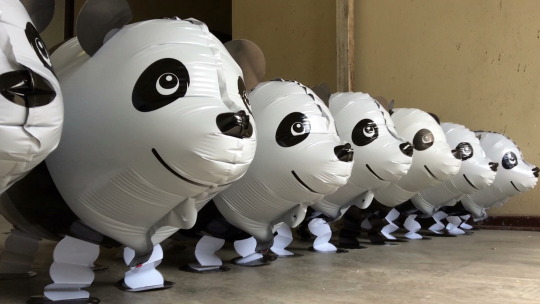
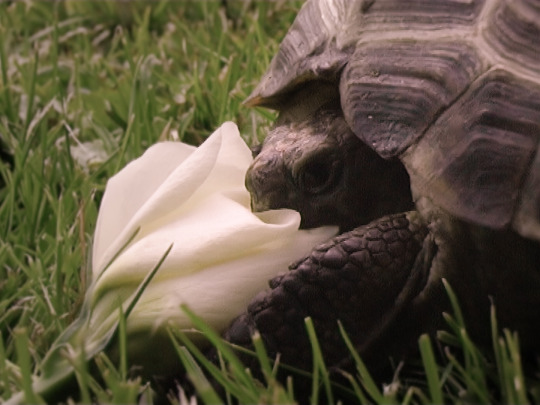
The Connection
Short film matinee curated by Betty Schiel (Women Film Fest Dortmund+Cologne)
02/10/2022, 3 PM
Medienwerkstatt Wien
Neubaugasse 40A
1070 Wien
We attempt a thought experiment: everything is connected to everything else in a living network in which we are interdependent. How would it be if, in this new attitude, we did not place man as an exceptional being at the center of being, but tried to adopt a more-than-human perspective? This radical shift in perspective is about searching for non-anthropocentric perspectives and thus revising the nature film as a whole. What stories can be told about it? What might the films look like and what formal-esthetic approaches can be helpful in the encounter with the Other?
The experimental short film seems particularly appropriate, as it literally unhinges the visual axes with immediate emotional access. The often witty deconstruction of the animal film as a genre is pursued by the filmmakers with all the means of art, for example through the dramaturgically pointed search for the optimal camera angle on the animal object of desire, which is then withheld from us. What do we see when we look at others? How do others look back. Plants, humans and other animals only have a chance to survive if resources are equally distributed among all beings. Showing and practicing this equality in artistic attitude inspires filmmakers to new approaches, of which we collect some exciting examples in this program.
Short film program
Muttitelefon
Dagie Brundert, D 2022, 5 min
Power poles without wires in a field, filmed in grainy Super8 esthetics. "These poles here - where are the lines, the wires, the connection? Look - they are gone. What's going on there? I'll take a closer look." Dagie Brundert makes contact with her fellow world, drawing lines of connection and using the mummy phone to bring human delusions of grandeur to the right level. "Be a transmission tower or just shut up for a while."
blueberries -cerne jagody
Maja Nagel, Julius Günzel, D 2013, 15 min
The old lady knows the best places to pick blueberries and she also knows how to preserve them well. She loves the old beech tree and the area, which she knows like the back of her hand. Open-cast lignite mining is inexorably devouring the forest of the Muskauer Heide and is approaching the village of Rohne, where the two Sorbian protagonists Edith and Christian Penk live. A tragic story from Lusatia.
How to Civilize a Waterfall
Hanna Ljungh, S 2010, 4 min
Hanna Ljungh goes on a direct confrontation course with untamable nature. Wordy and in rocker pose, she tries to persuade a waterfall to turn into a power plant; man's paradoxical relationship with nature as a comic and passionate performance. Since we cannot communicate with nature, Ljungh states, it easily becomes an alien and alienated other - with an ever - changing identity that is impossible to comprehend.
Fahrt ins Blaue
Ingeborg Tölke, DDR 1965, 9 min
"The dandelion, blooms, is fertilized and closes its flowers." Ingeborg Tölke explains the reproduction of flowers in her Super 8 film. In poetic macro and time-lapse shots, she captures pollination, fruiting and seed dispersal. A male narrator's voice explains the facts. Fahrt ins Blaue is the first GDR amateur film to celebrate success on the international stage, for example winning the silver medal at UNICA 1965 in Dubrovnik.
Exercises in Being Close to You: A Story for the Arctic Refuge
Krista Davis, CA 2020, 15 min
The National Arctic Refuge is sacred land for the First Nation indigenous community; it is also the place where 40,000 caribou calves are born each spring. Krista Davis joins a 10-day expedition to observe the migration of caribou and explore how to critically engage with your fellow world through the camera. In her ostensible animal film, she uses a variety of artistic means to unhinge the format.
Panda Moonwalk or Why Meng Meng Walks Backwards
Kerstin Honeit, D 2018, 8'
Sometimes it's two steps backward. The Berlin Zoo's multi-million dollar new animal investment does not play along. Between short film and performance in public space, Kerstin Honeit combines elements of found-footage film, reportage and music video with humorous, queer re-enactments of interview passages with passers-by to create a counter-narrative. The backward walking of the panda Meng Meng becomes an act of rebellion.
Whispering Pines 10, Chapter 1
Shana Moulton, USA 2018, 5 min
Shana Moulton's alter ego Cynthia has been searching for the meaning of life and fulfillment for nearly twenty years in the video series Whispering Pines. She is helped by interactive home design, self-help guides, videos to follow, and beauty rituals. In the very first chapter, she finds spiritual liberation on the yoga mat through a blissful fusion with Mother Earth.
What a Wonderful World
Anja Plaschg (Soap&Skin), Timo Schierhorn, D 2018, 2 min
"I see trees of green, red roses too I see them bloom, for me and you And I think to myself What a wonderful world..." (Bob Thiele, 1967)
A beautiful day in the life of a turtle. She does what she enjoys. An animal music video with a single protagonist being handed treats. The camera stays at eye level with the heroine.
Image credits:
1) Shana Moulton: Whispering Pines 10, Chapter 1, USA 2018, video still
2) Kerstin Honeit: Panda Moonwalk or Why Meng Meng Walks Backwards, D 2018, video still
3) Anja Plaschg (Soap&Skin), Timo Schierhorn: What a Wonderful World, D 2018, video still
2 notes
·
View notes
Photo

Screening of new films by GPC members
in the frame of the “refinerymonastery” 20th Biennial of Art in Pančevo
24/06/2022, 8 p.m.
Kulturni Centar Pančeva, Vojvode Živojina Mišiča 4
Pančevo, Serbia
Cooperation partner 20th Biennial of Art Pančevo “refinerymonastery” Curated by Maja Ćirić, Austrian Cultural Forum and Austrian Embassy in Belgrade
With works by Iris Blauensteiner & Christine Moderbacher, Enar de Dios Rodríguez, Marlies Pöschl, Katharina Swoboda, Simona Obholzer and Lisa Truttmann
Duration: 90 minutes
The 20th Biennial of Art in Pančevo is thematically inspired by a local hybrid phenomenon that reflects the iconic and seemingly contrasting, horizontal and immediate coexistence of the Oil Refinery and the Vojlovica Monastery, and whose interdependence can be symbiotic or conflicting, depending on the point of view. The Biennale "refinerymonastery" raises questions about whether and how it is possible to act outside and over the domains of matrices, patterns and conditions generated by the monastery and the refinery, each for itself and together, and how to resolve the relationship between limited parochial activity and unrestrainable need for openness and inventiveness. The "refinerymonastery" may find temporary answers in art that reconciles speculative imagination and technology. If it is not possible to deviate from both dogmatism and hypercapitalism, then an artistic proposal is possible in the sense of creating a temporary difference. - Maja Ćirić
Iris Blauensteiner & Christine Moderbacher: The world is blue at its edges
MiniDV/Super 8/HDV, 16:9, color, stereo, 15 min, AT, 2021
"What could I tell you about the world I live in?" Addressing her unborn child, the narrator tries to find answers partly through claustrophobic pictures interwoven with intimate notes on a pregnancy in times of a pandemic. Based on a childhood memory, the experimental short film spans from the Cold War Iron Curtain, to the so-called “refugee crisis” and the renewed closing of borders during COVID-19. Textures of walls closing in, blur with pixelated maps, creating a subjective portrait of a new reality and its digital image-world.
Iris Blauensteiner’s and Christine Moderbacher’s The world is blue at its edges is directed at an unknown future. It’s a film about life and everything that speaks against life. As if behind glass, fragments of perception appear. They confront the somber world of today, consisting of screens and lockdowns, with the faint heartbeat of an unborn child. In the film the mother shares her thoughts with the child. What can she show to her future offspring, which images of today can speak tomorrow?" (Patrick Holzapfel)
Enar de Dios Rodríguez: Liquid ground
HD, 16:9, color, stereo, 32 min, AT/ES, 2021
Although the oceans make up more than 70% of the Earth’s surface, to date now only a very small portion of the seabed has been mapped. However, in recent years, the mapping of these spaces has accelerated due to different economic, geopolitical and scientific interests, determined to build a ‘new continent’ to be explored and exploited under the sea. Liquid ground is a video essay that takes as its thematic axis the ocean floor and its current cartography to talk about colonialism, ecology and representation.
Shaped by a wide variety of found material – from the illustrations of the first worldwide oceanographic expedition, to current technologies and visions related to the oceans floors – Liquid ground functions as a reminder of the liquid grounds that, in reality, sustain and compose us. Moreover, it is a call to disobey the stability of the arbitrary, extractive and limiting lines that are drawn over space. Much like any other form of knowledge, Liquid ground also offers us a series of riddles.
Marlies Pöschl: Shadow Library
4K, 16:9, color, stereo, 7 min, AT, 2021
In a near future, data is no longer stored in data centres but in the DNA of plants. During a presentation of the data garden of an Austrian mobile phone manufacturer called Cyan, the film accidentally leads us to a second, invisible ‘library’ – the ‘shadow library’, which is stored on some of the plants. The video addresses how the effects of globally unequal production relations inscribe themselves in plants, migrate with the plants and thus anchor themselves in collective memory.
The text in the second part of the video is based on poems by the Chinese poet Zheng Xiaoqiong, who addresses the living and working conditions of Chinese migrant workers in her work. The soundtrack of the film (‘Fern’ by Mileece) is based on the sonification of electric currents in plants.
Katharina Swoboda: Stones
2K video, 16:9, color, stereo, 8 min, AT, 2021
Most raw materials used in a smartphone are extracted from the earth. Great quantities of rock need to be mined and then laboriously processed to extract the elements needed to build the phone. Some of these coarse rocks, from which elements such as palladium, tantalum, lithium and rare earth metals can be extracted, are shown in the video. A female scientist examines these stones under a microscope and shares an abstract look at the “inner landscapes” of a smartphone. The video ends with an experiment – after referring to the beginning of the smartphone's raw material supply chain with the rocks, the experiment focuses on the end of the useful life of the device.
Simona Obholzer: Perfect Particles (x kWh)
2K video, 9:16, color, silent, 6 min, AT 2021
Snowfall creates a special kind of landscape. A white layer covers everything, everything is given a new surface. The snowy landscape is a highly emotionalised landscape that is reproduced in many ways and behind which, in times of global warming, lies a lot of technology. In Perfect Particles (x kWh) computer-generated nature imitates the natural phenomenon. Snow falls incessantly, sometimes more, sometimes less. The artist's hands reach out towards the "natural spectacle" in anticipation of a random, ephemeral contact.
The flakes, however, are digitally generated, and have no connection to the material world. The particles ejected by the emitter leave no trace on the image of which they have become a part. The physical contact remains a mental experiment.
Simona Obholzer's installation addresses the viewer's body as an empty space between the two screens. She invokes the haptic perception of the viewer and plays with their orientation between the space created by the image and real space.
Lisa Truttmann: Tracks I-III
HD-split-scree, 16:9, color, stereo, 20 min, AT, 2021
At the beginning of film history, fast-moving landscapes haunted early cinemas as “Phantom Rides.” Back then, cameras mounted on trains visually conquered supposedly untouched areas at top speed, now mobile radio signals control our technological gaze and access rural areas. Tracks I-III searches for traces, following the former section of the “Ischlerbahn” between the towns Mondsee and Strobl. On a digital phantom ride of the present, we cross the landscape, associate connections, looking forward in fragments and backwards in time. We ask how invisible signals travel, how they manifest themselves in moving images, and why we are now looking at cell phones instead of the screen in a cinema.
Image credit:
Katharina Swoboda: Stones, 2021, video still
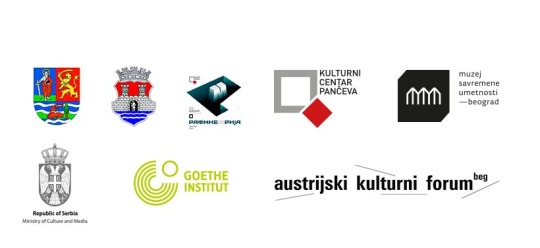
0 notes